The smallest island in the Galapagos that is inhabited, is Isla Floreana. There are only 150 people living here, spread out in the village Puerto Velasco Ibarra, and a few farms in the highlands.
As with the other islands, this is also volcanic , and several peaks could be spotted as we made our approach.
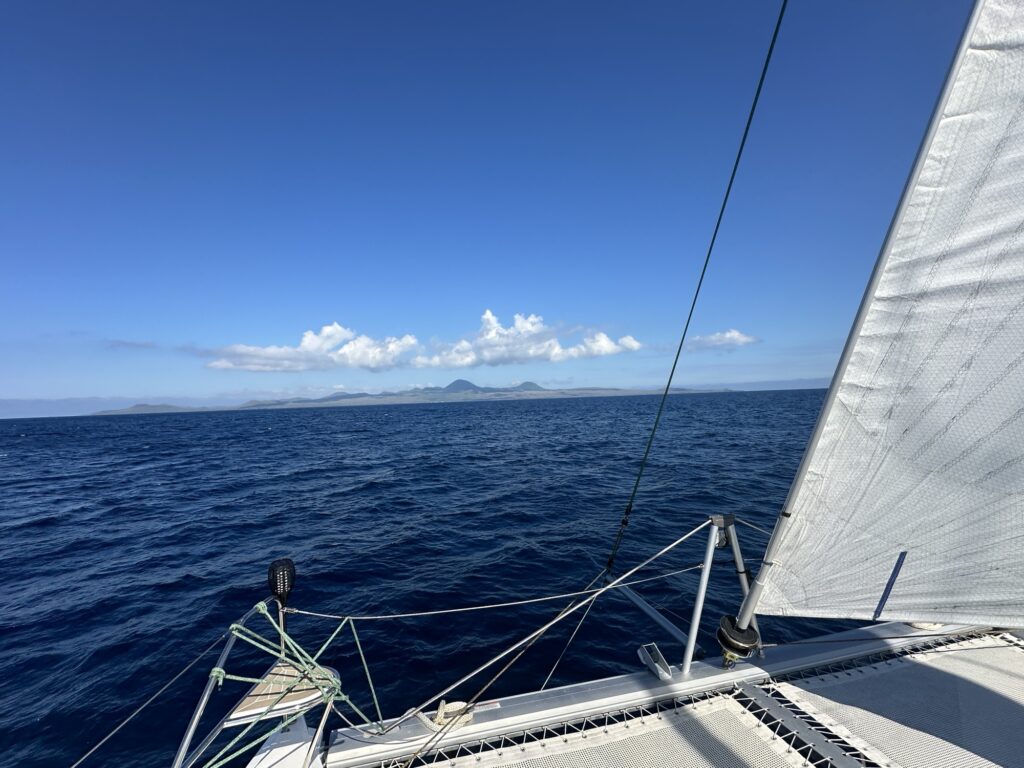
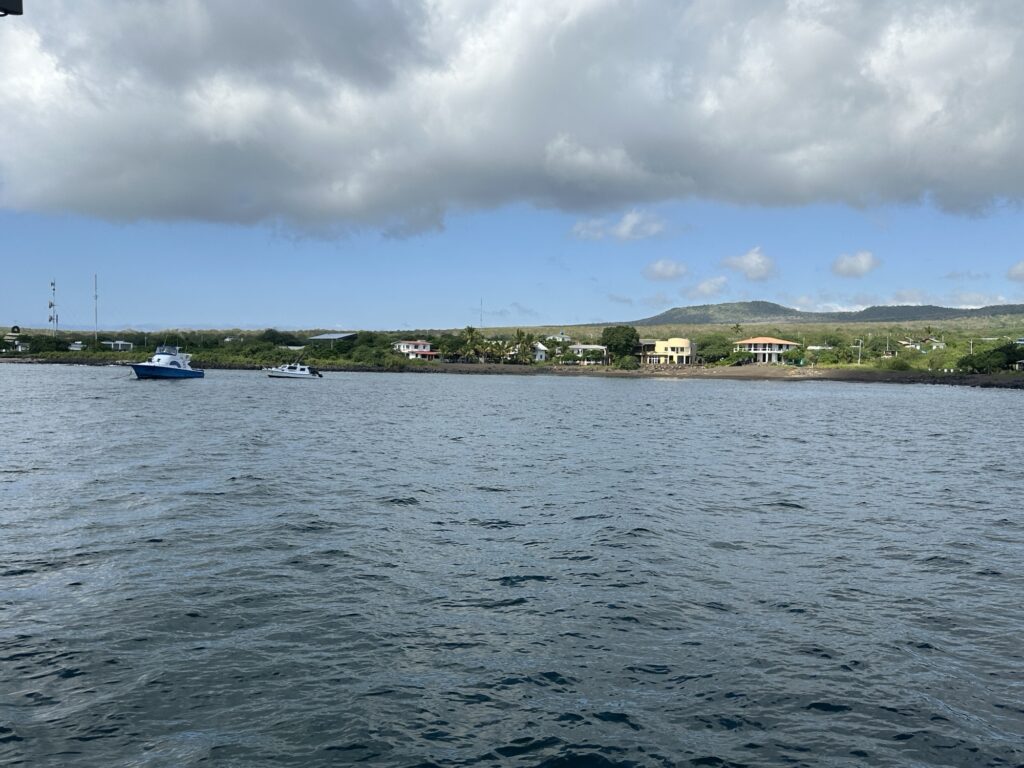
We started our island exploration with a day tour with our local agent, Max. He picked us up in a water taxi and drove us in his pickup truck to visit the highlands, his farm and we had lunch at his restaurant. It quickly became apparent that on a small island, everyone wears many hats!
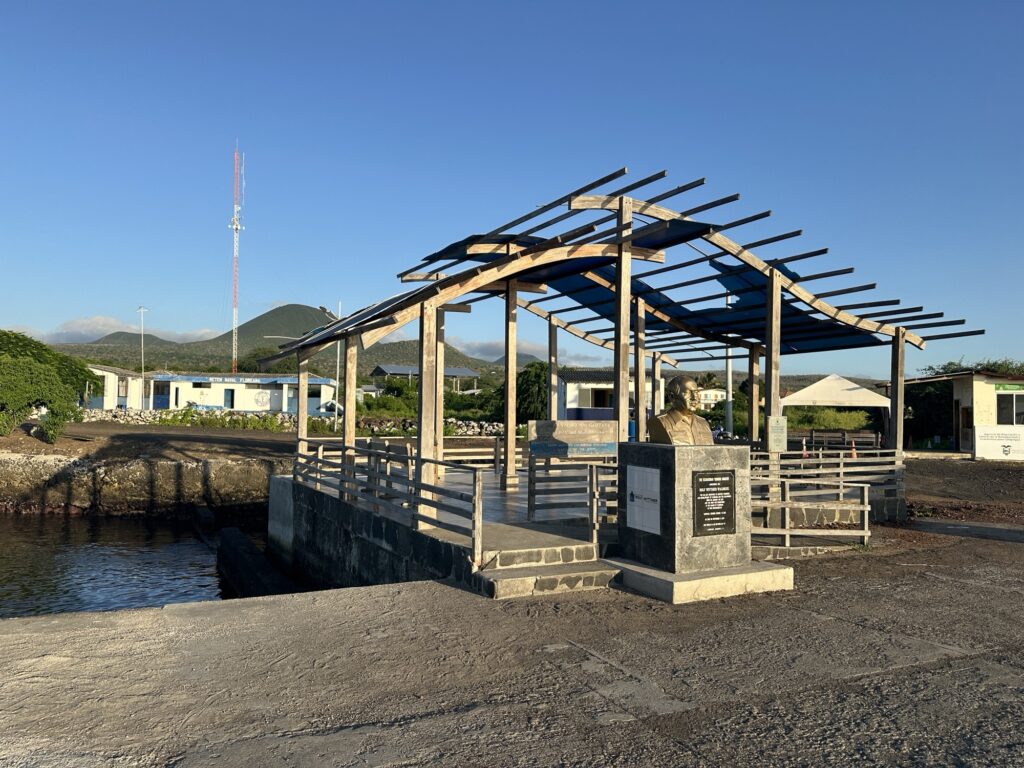
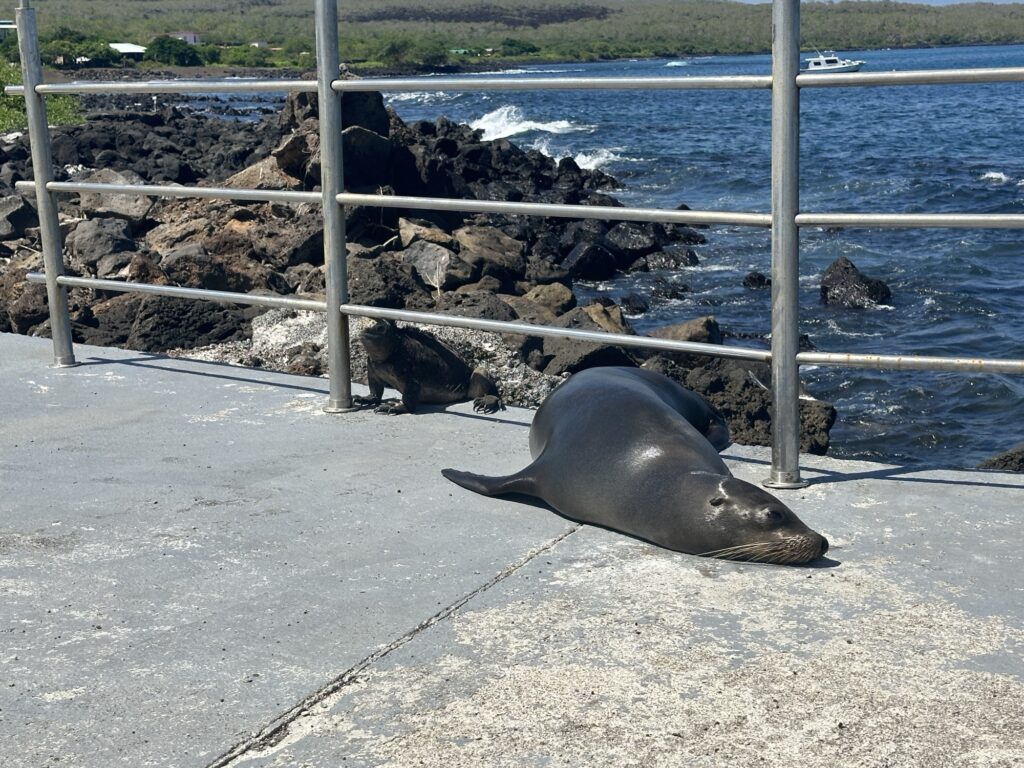
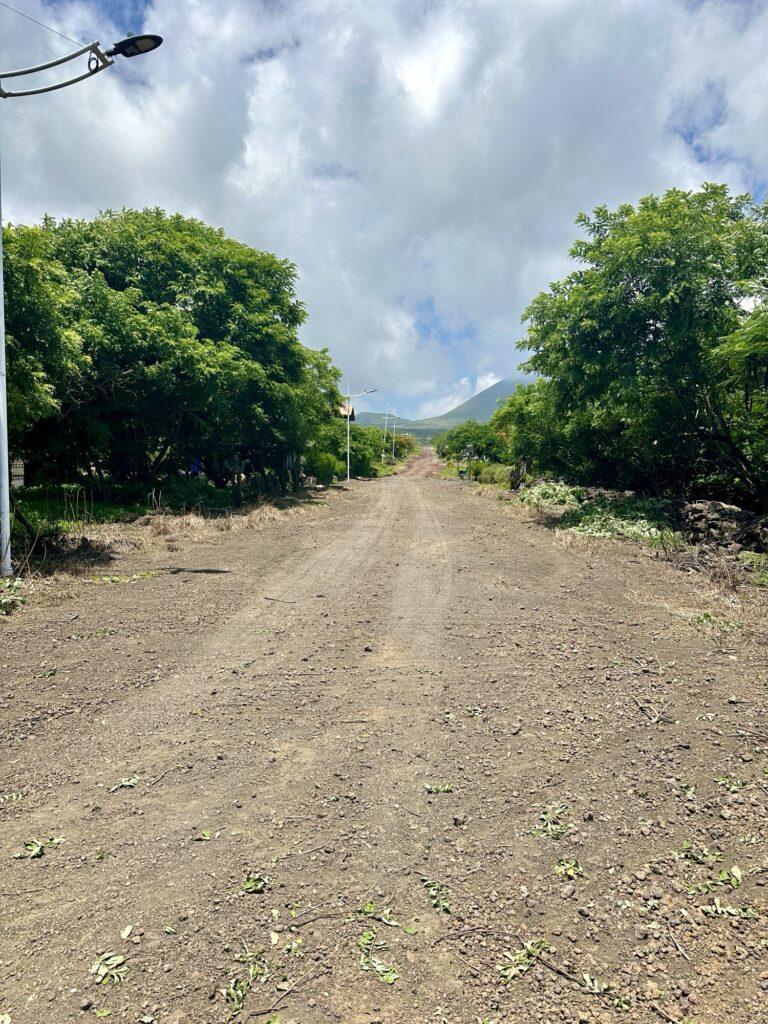
All of the roads on Floreana are dirt roads, and the town has a school with 35 kids attending, a small clinic with a dentist and a doctor, and quite a few official roles working with and protecting the land and wildlife.
There are a few day tourists that arrive regularly from the bigger islands, and they also have a few tourists staying overnight. The hotels in town are normally as a second story in people’s houses, and can host 4-8 guests each.
We started exploring this island in the highland, where they have their water reservoir. Because this exists, Floreana became the first island in the archipelago where people got settled back in the early 1800s.
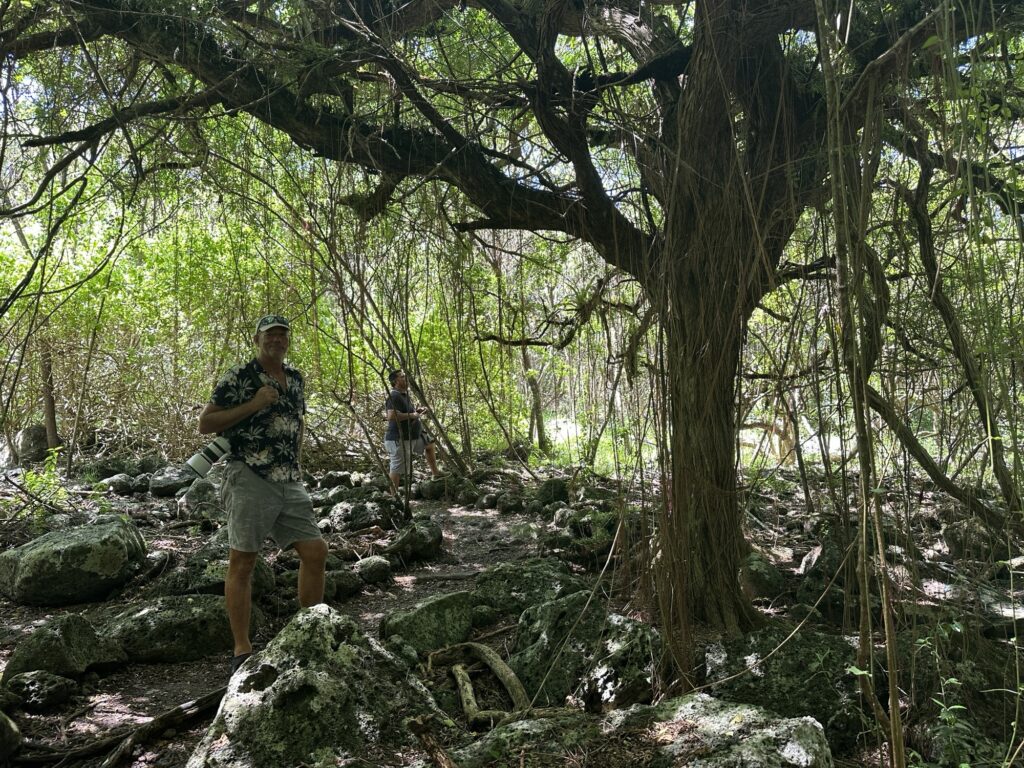
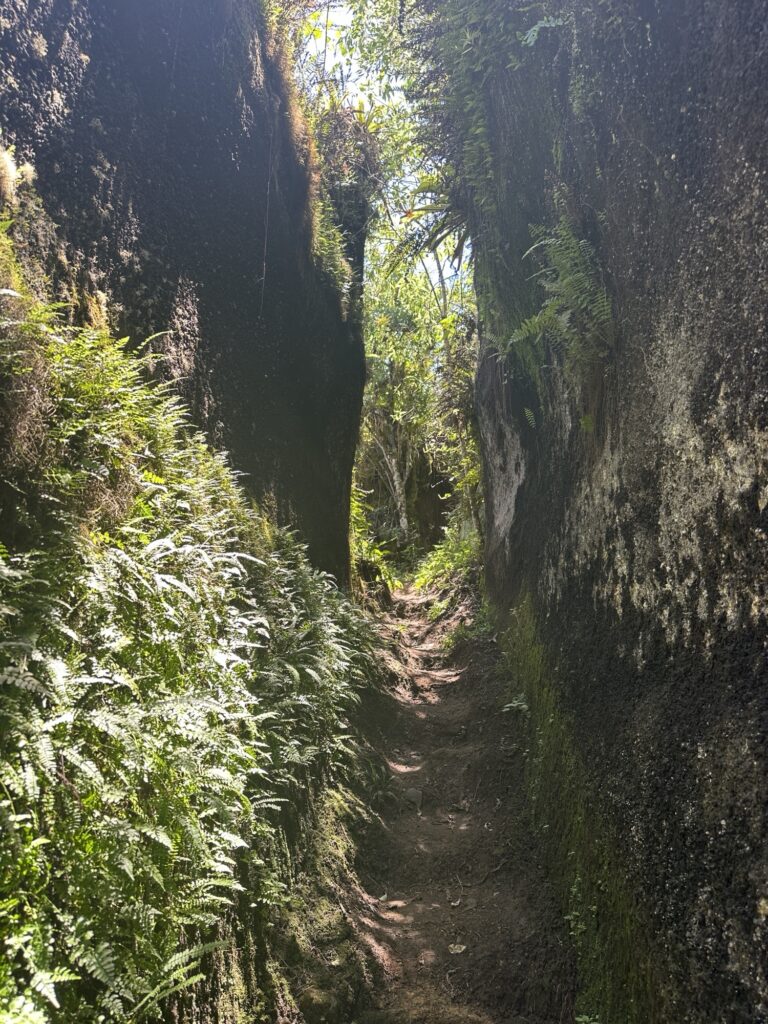
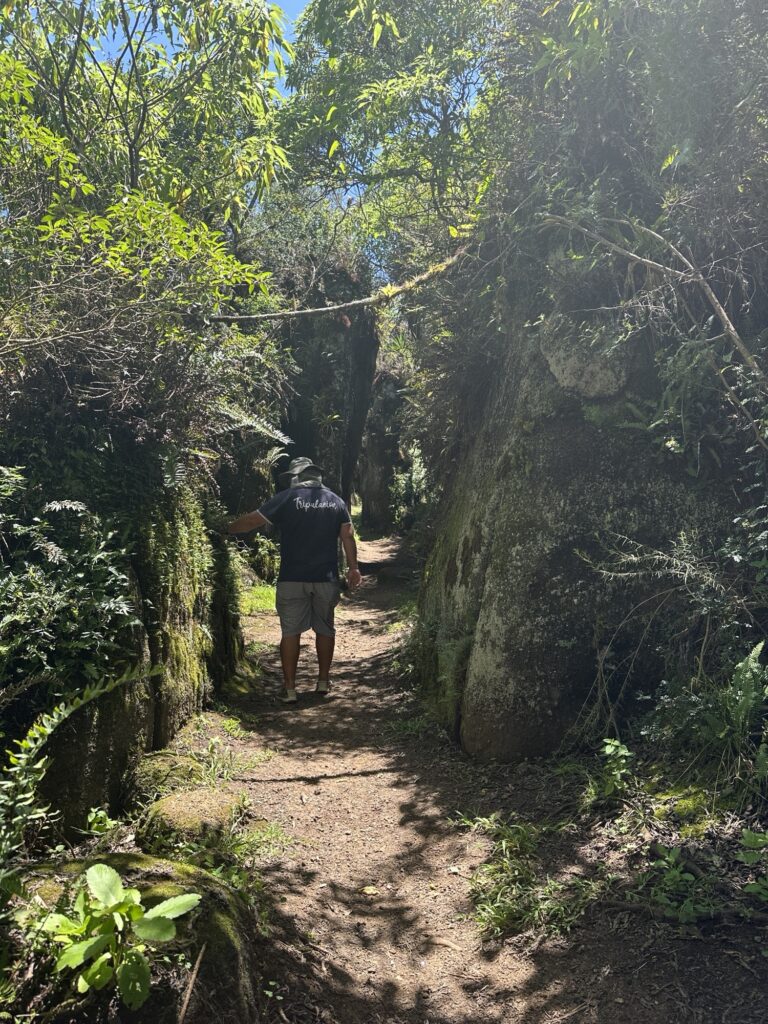
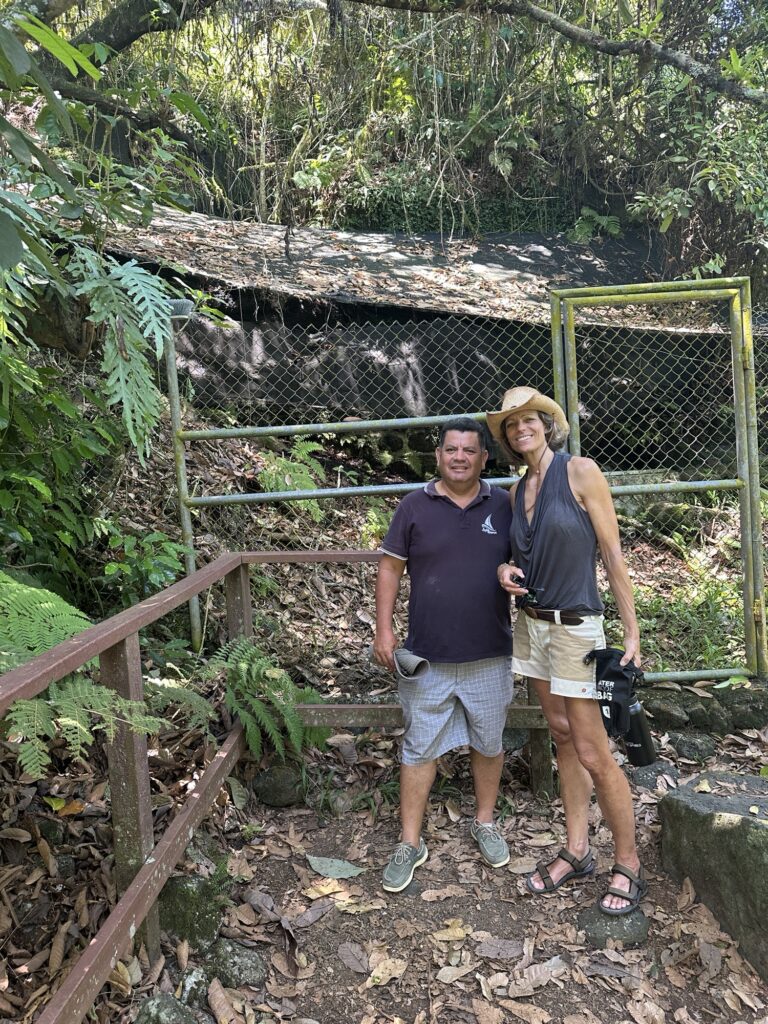
As on all islands, there is a breeding program for the local tortoises. In Floreana, there are currently no tortoises living in the wild. The local species was no longer found on the island. However, in 1990, a tortoise with DNA from the local Floreana species was discovered in the US, living in captivity. This tortoise was cloned, and now has 24 descendants living in Floreana. The plan is to slowly introduce them back into the wild on the island.
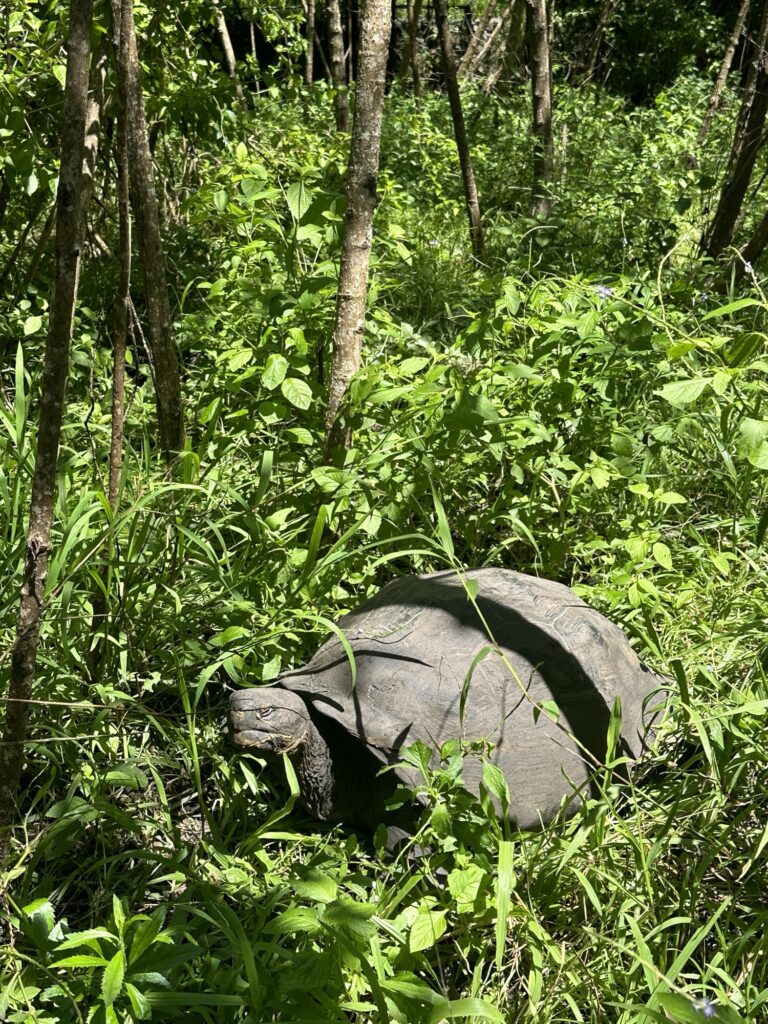
Pirates and fishermen made frequent stops to Galapagos, before the first settlers arrived from Europe. Some of the first settlers here were German, and their tales about the place, enticed people to travel from Germany by boat for many months, to reach this paradise. The first child to be born here, was a boy, Rolf Wittmer, in 1933. He was born in a cave in the highland, close to the water reservoir. His decendants still live on the island.
There were also a few Norwegian whalers who settled here, but they were not successful. Some died, while most returned to Norway after a few years.
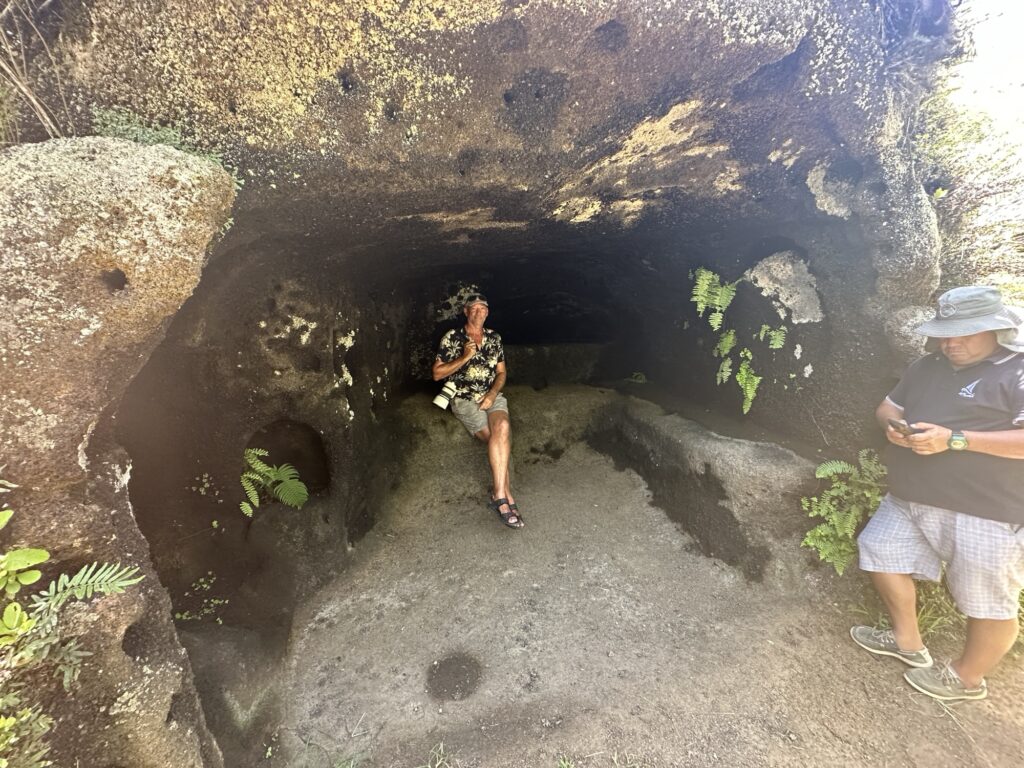
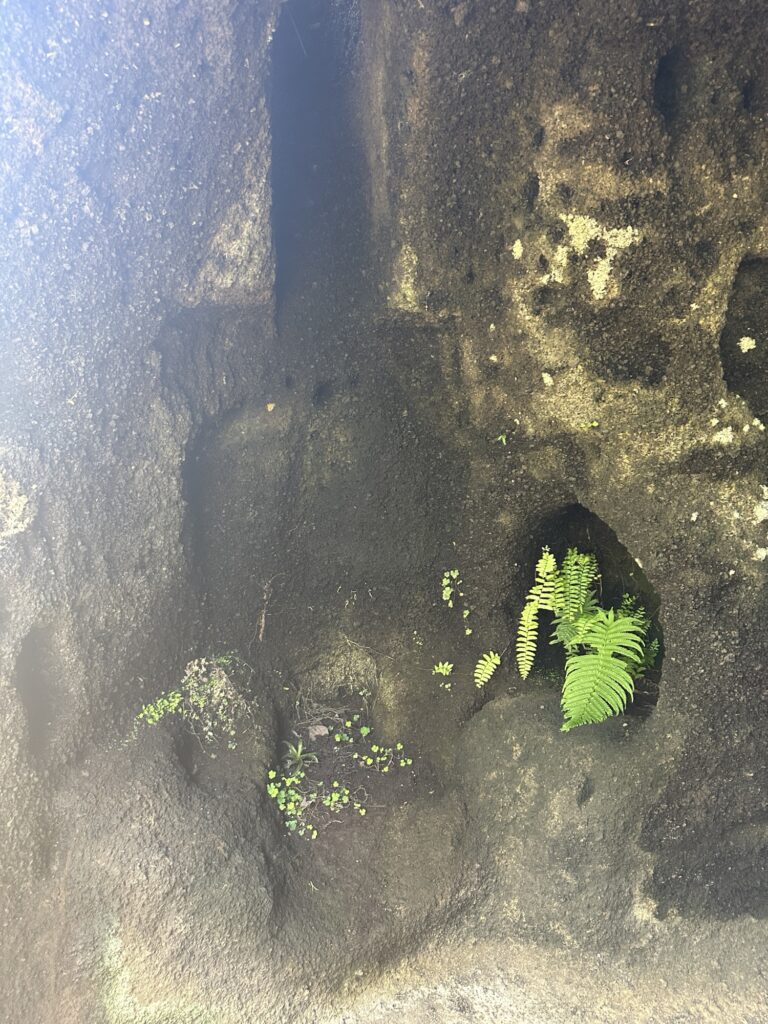
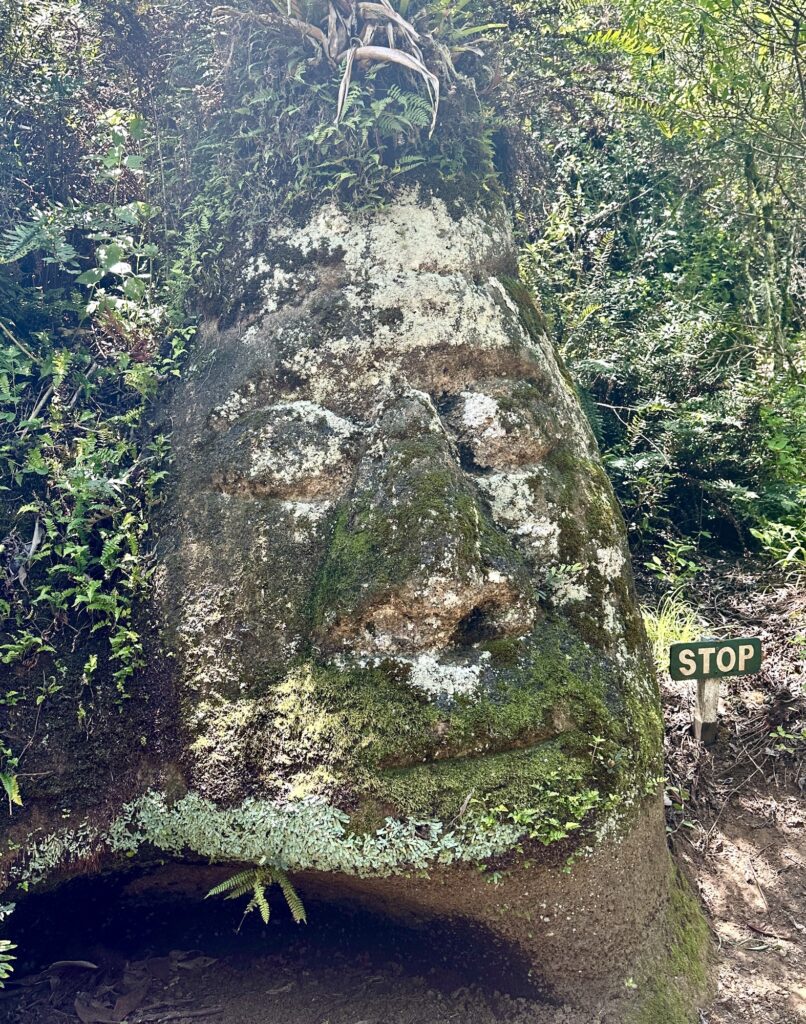
We stopped by Max’s farm while in the highland, and were so fortunate that he shared with us several oranges, limes and avocados. And Bruse went on his first yucca harvesting! Now we just need to learn how to cook them 😁
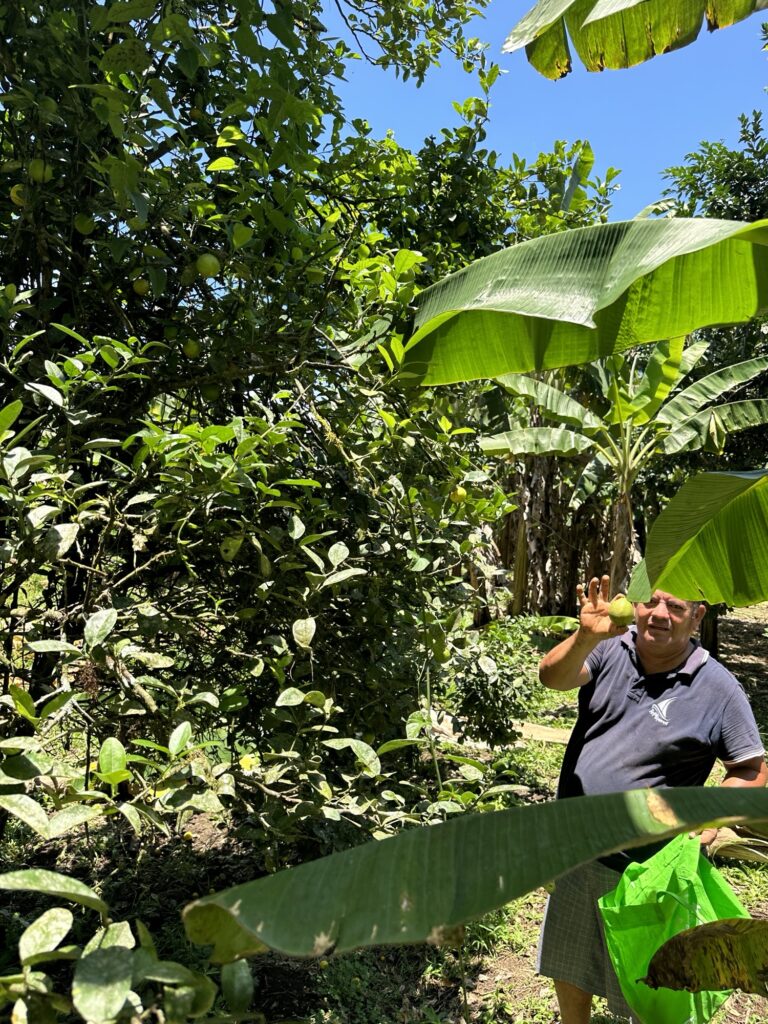
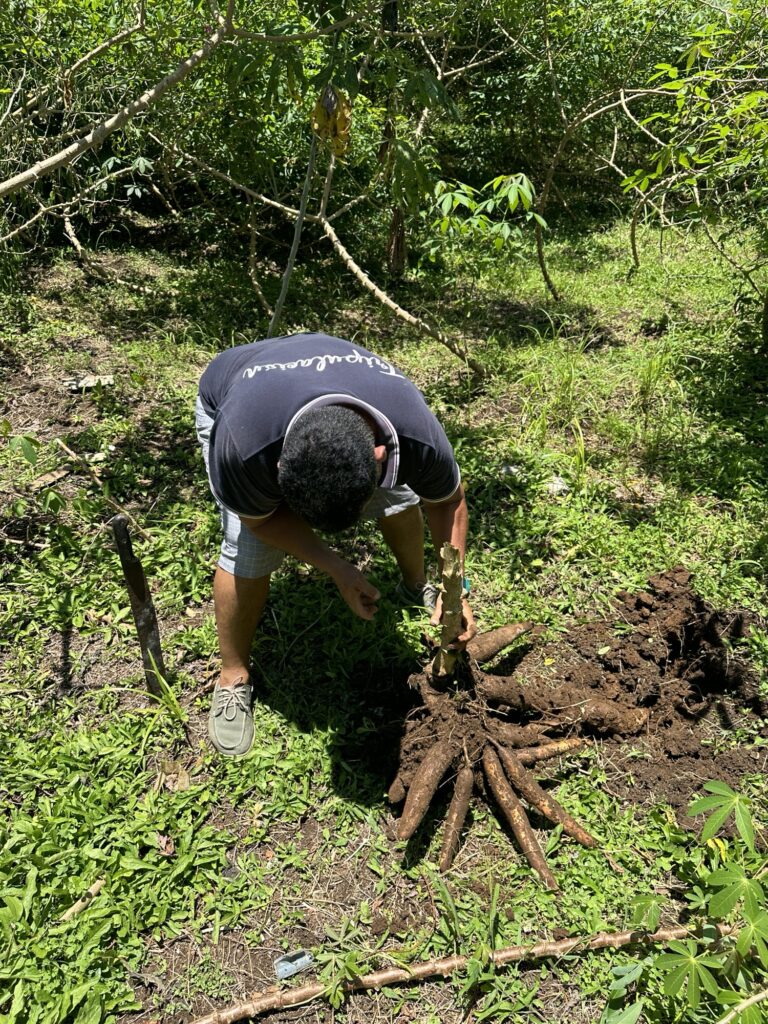
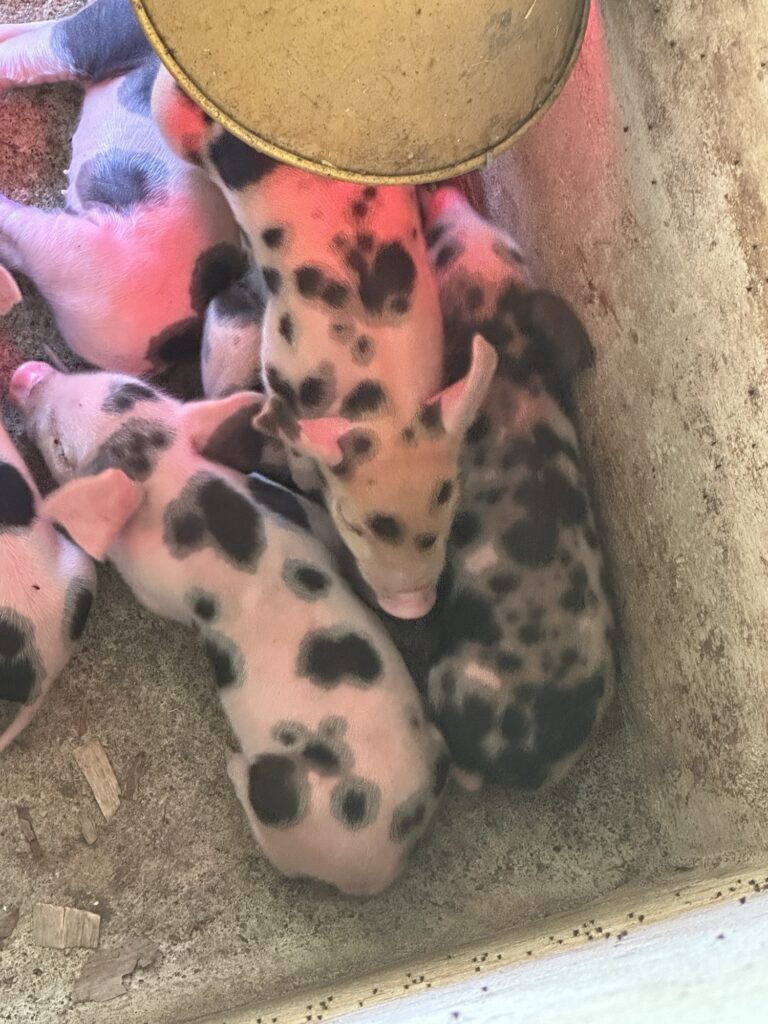
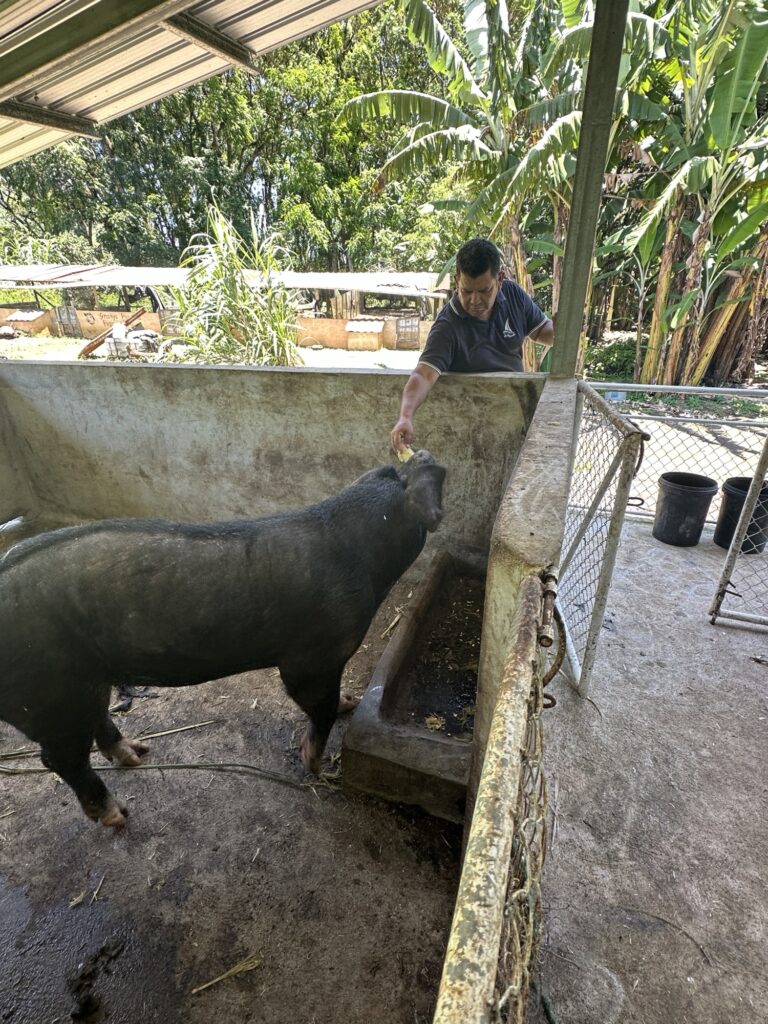
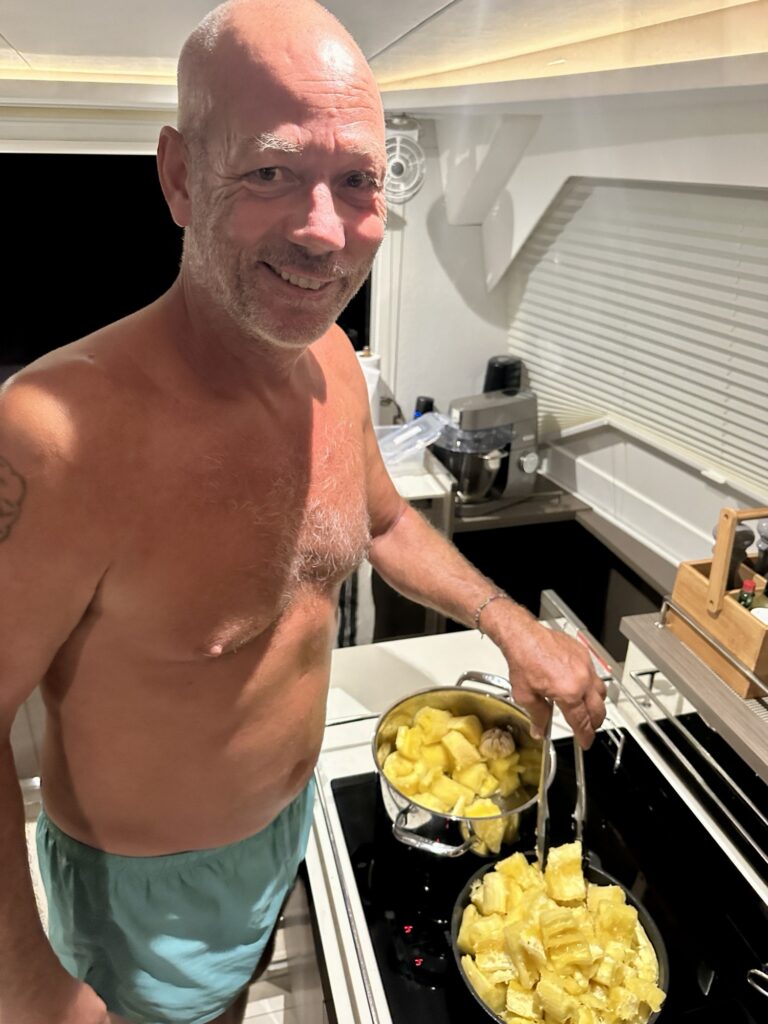
We had a very nice lunch at Max’s restaurant, before his father took us snorkeling in La Loberia, a beautiful bay a little outside of town.
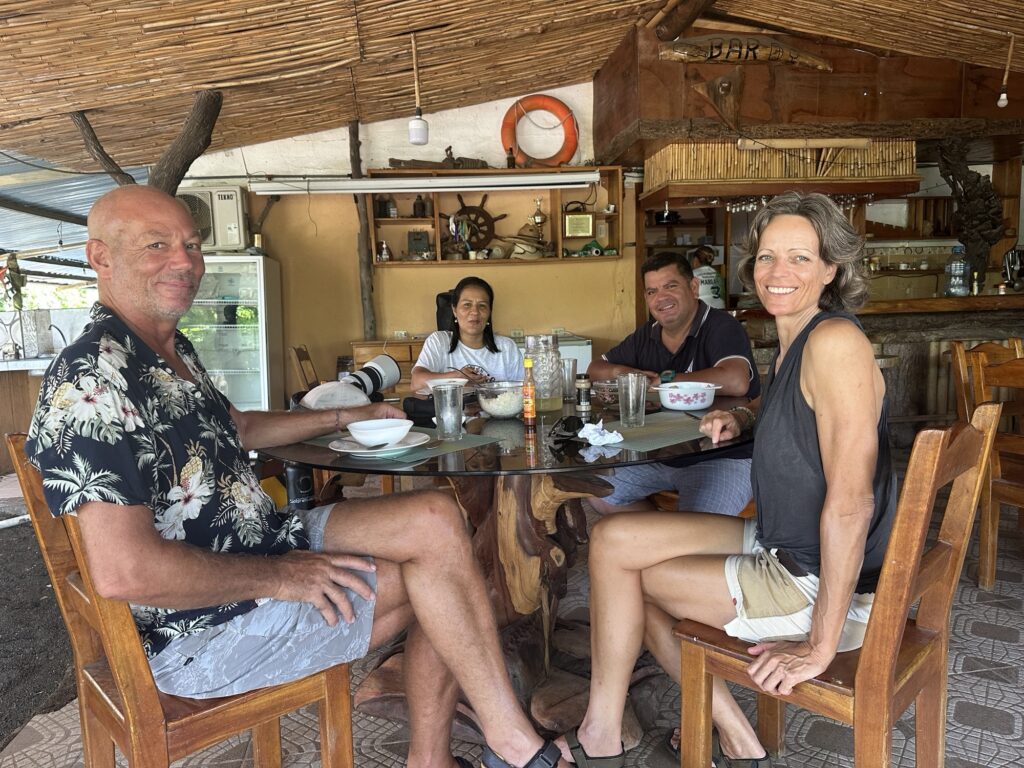
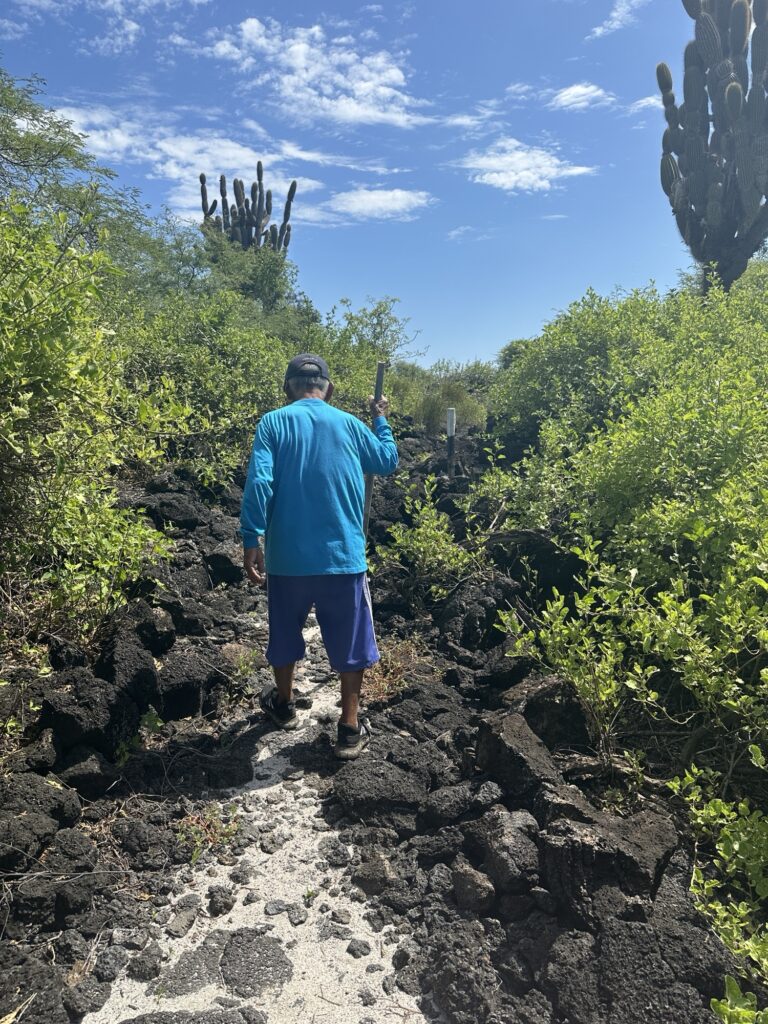
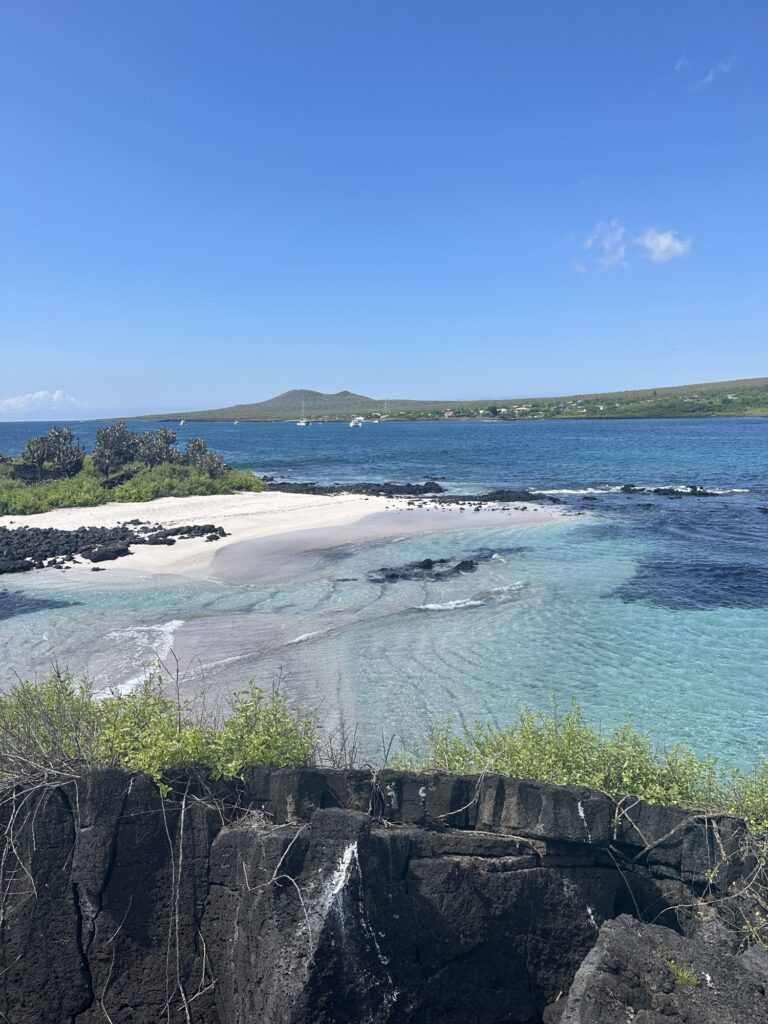
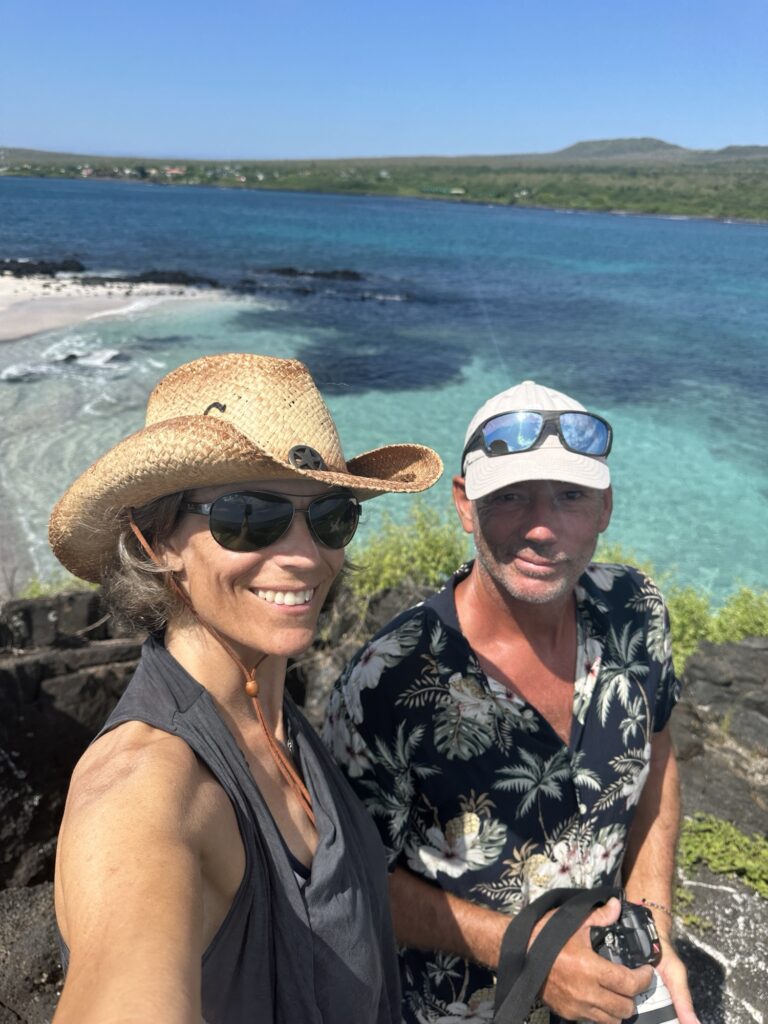
We spotted two eagle rays in the water in the shallows, so we hurried up and got into the water. We were lucky to get to swim so close to these majestic creatures. They surrounded us for a good amount of time, and did not seem scared at all. We also got to snorkel with turtles, lots of schools of fish, and a playful sea lion. The visibility was great, and the water was shallow, so we really enjoyed it.
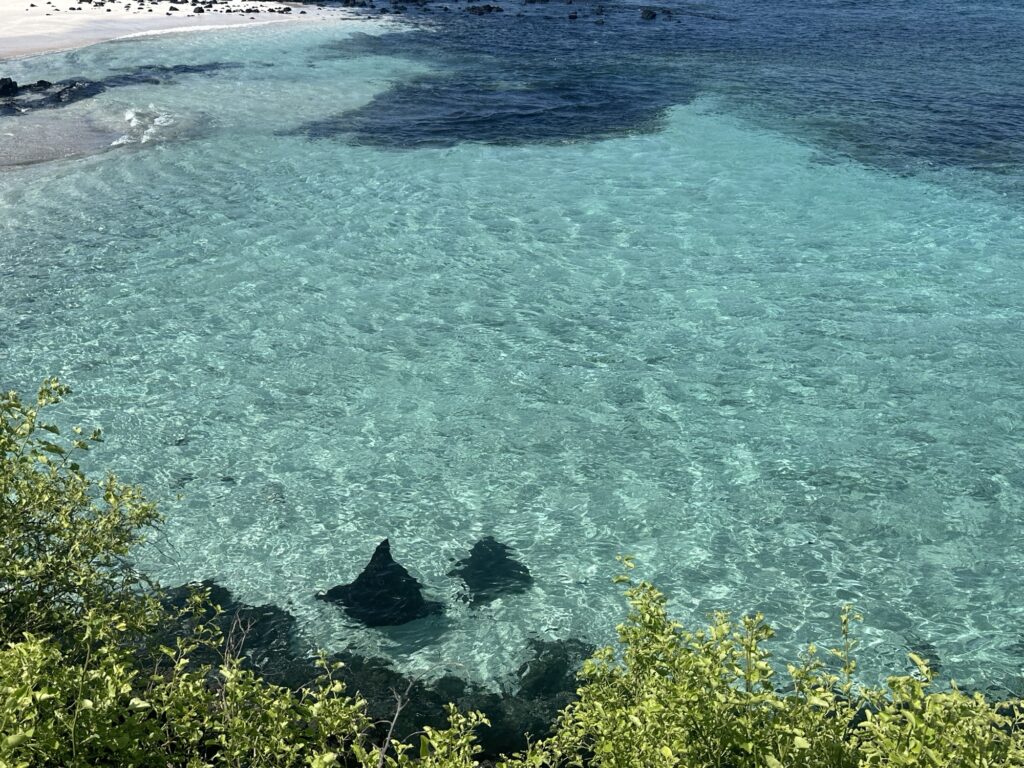
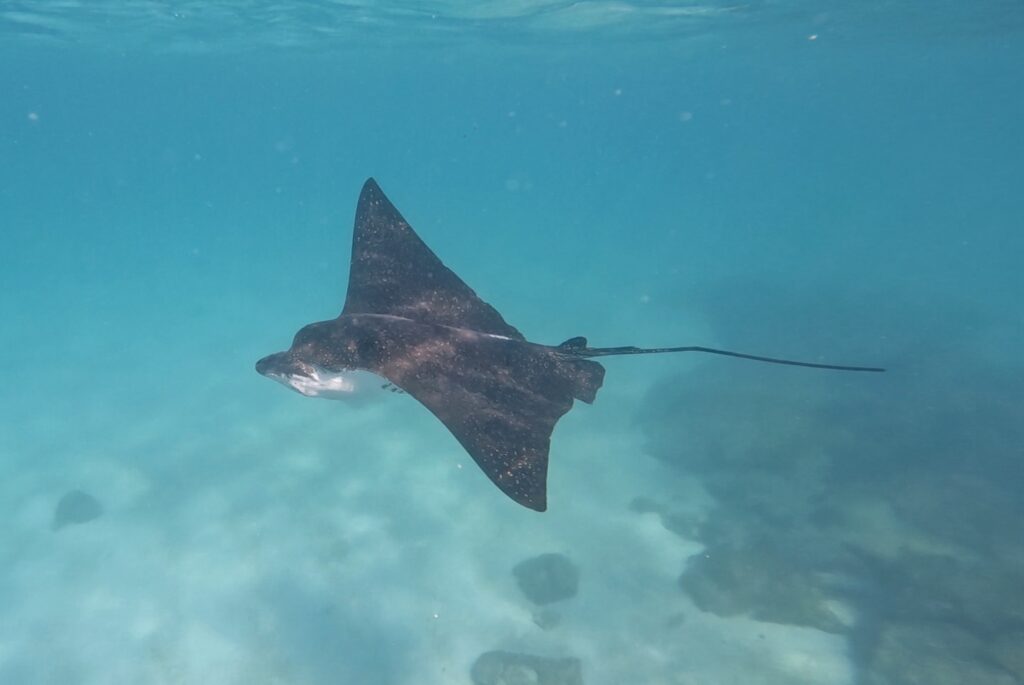
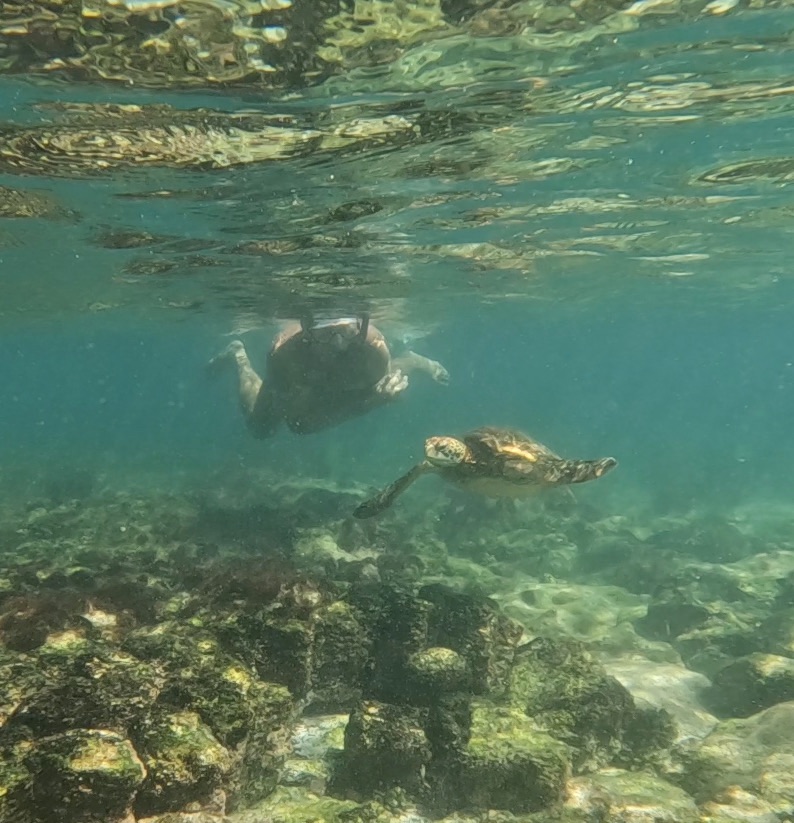
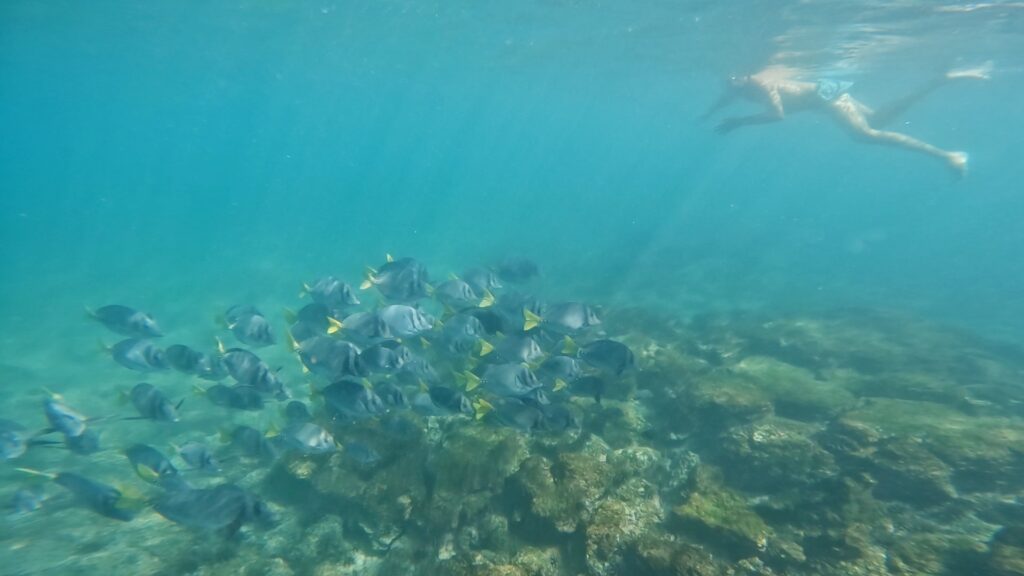
The following day, we explored a coastal hike west of town, to a lagoon where there can be flamingos sometimes. We did not see any, but found several other species.
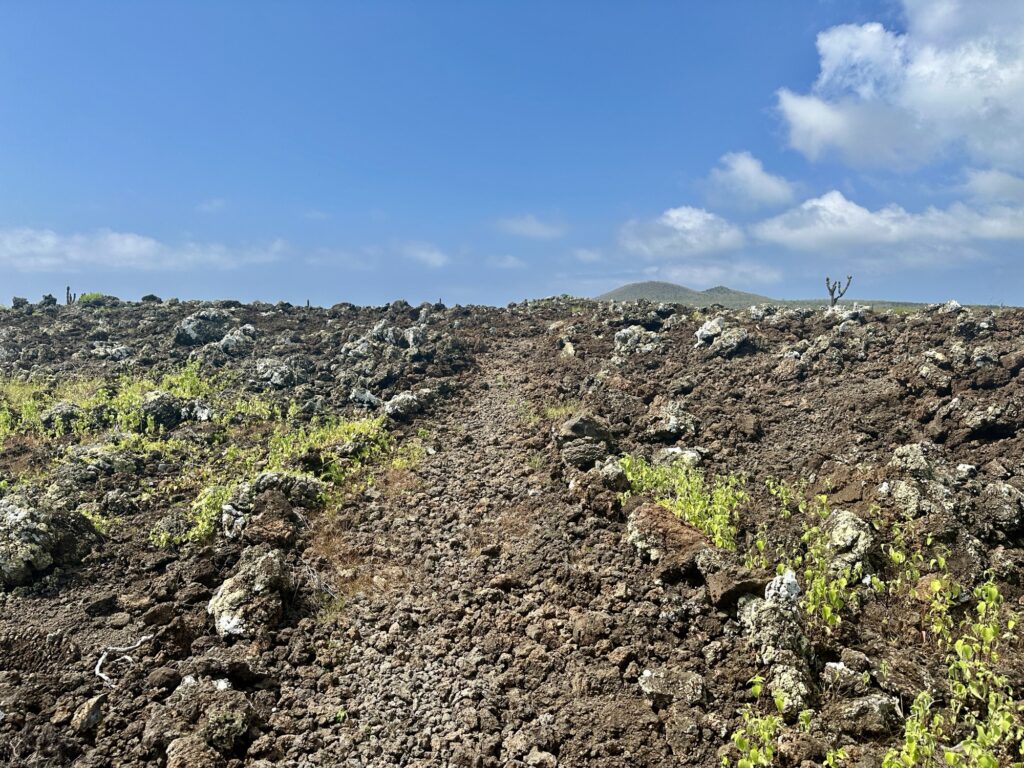
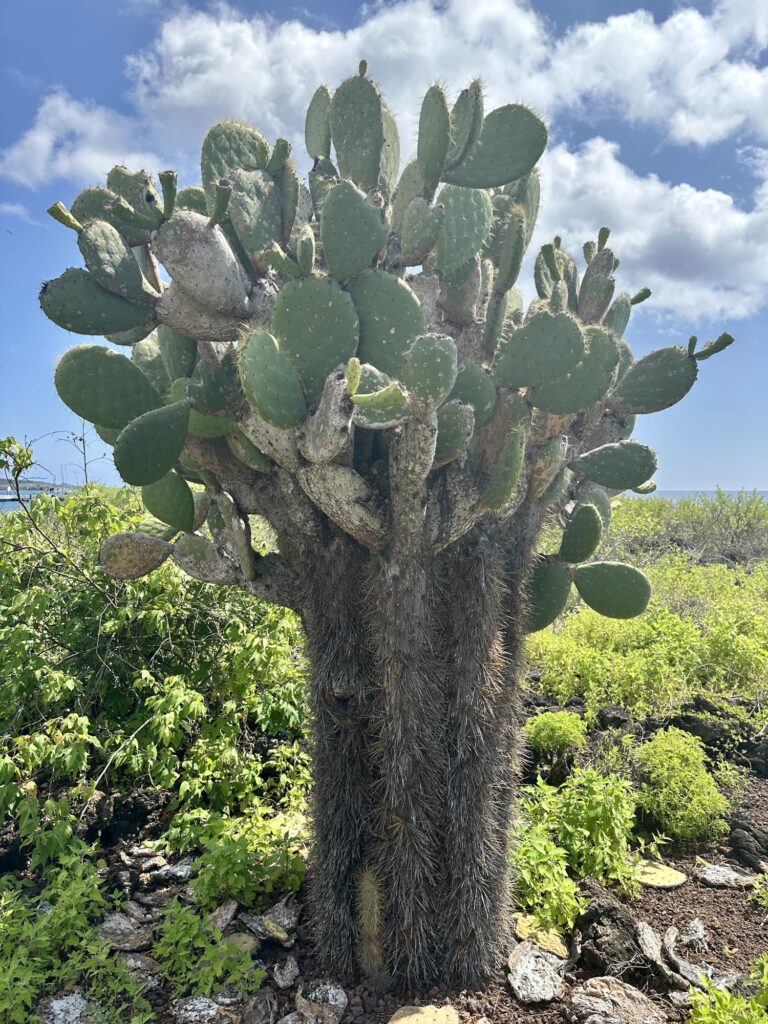
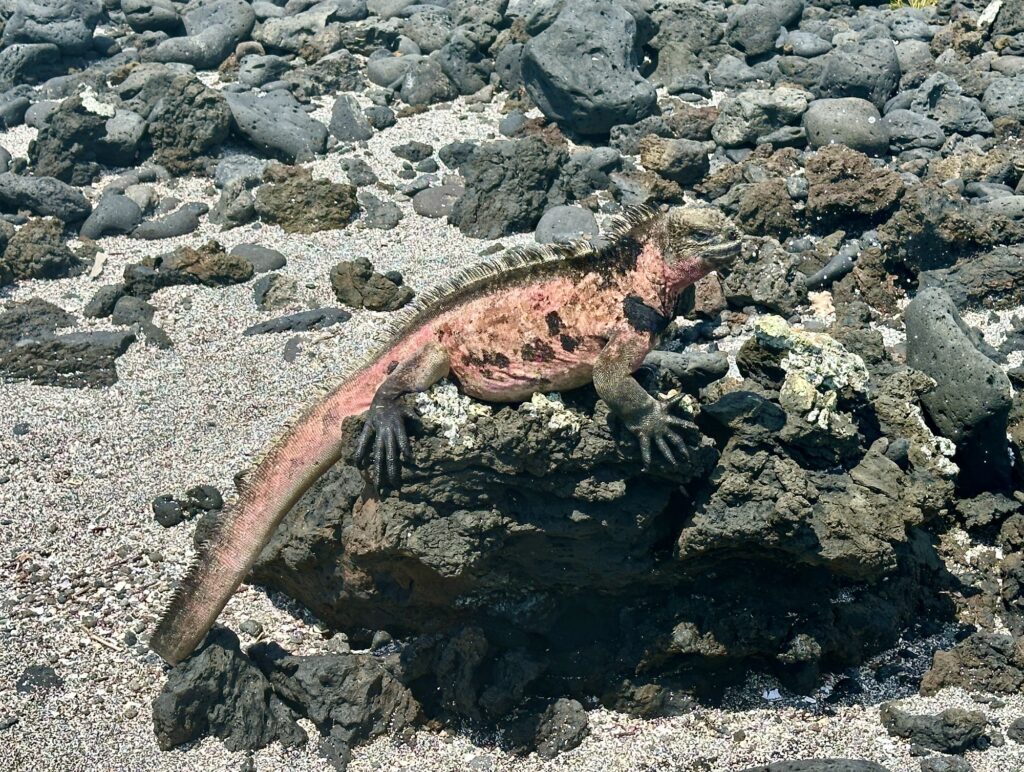
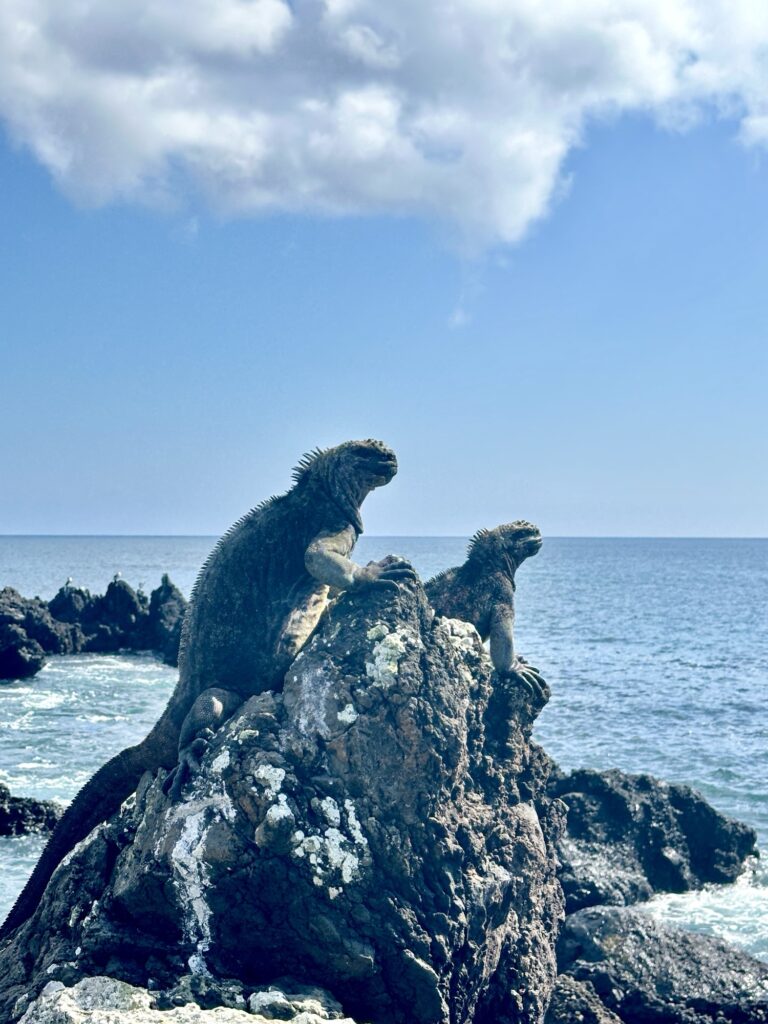
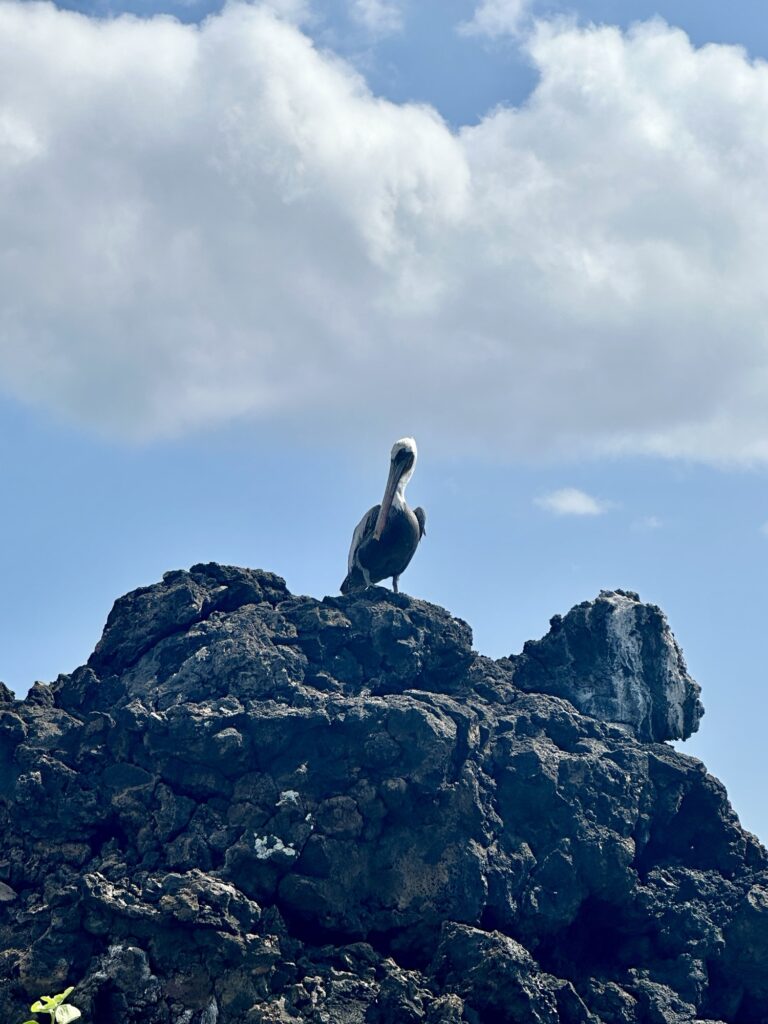
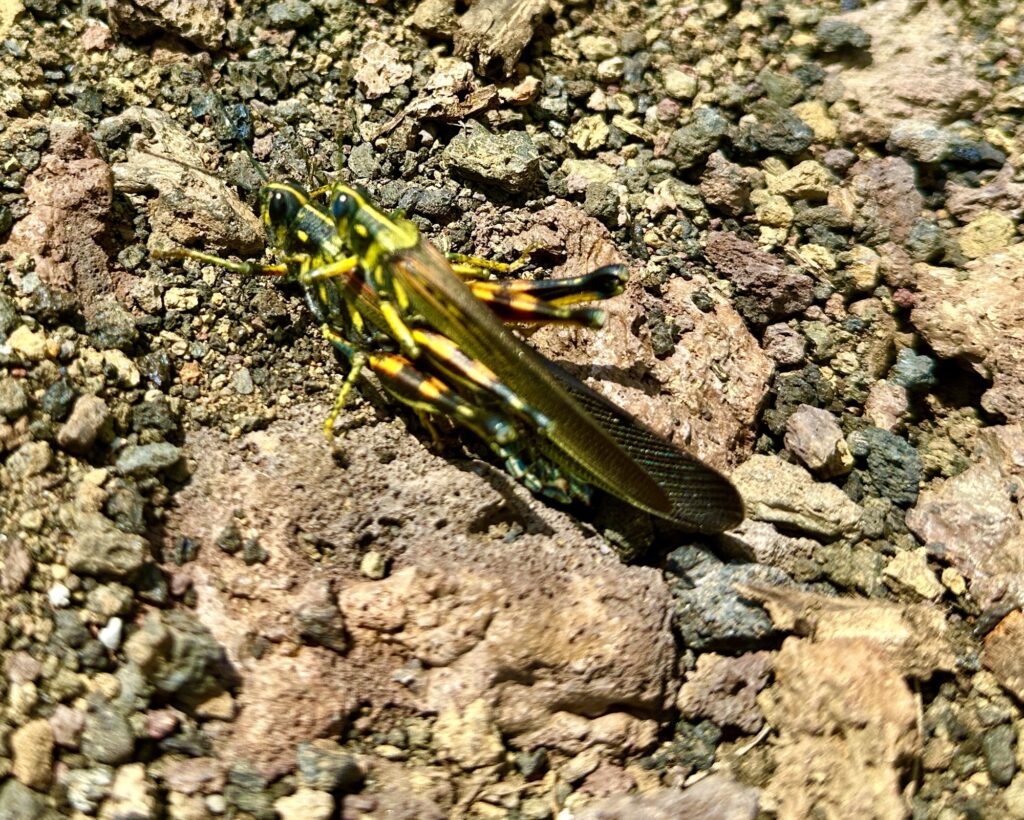
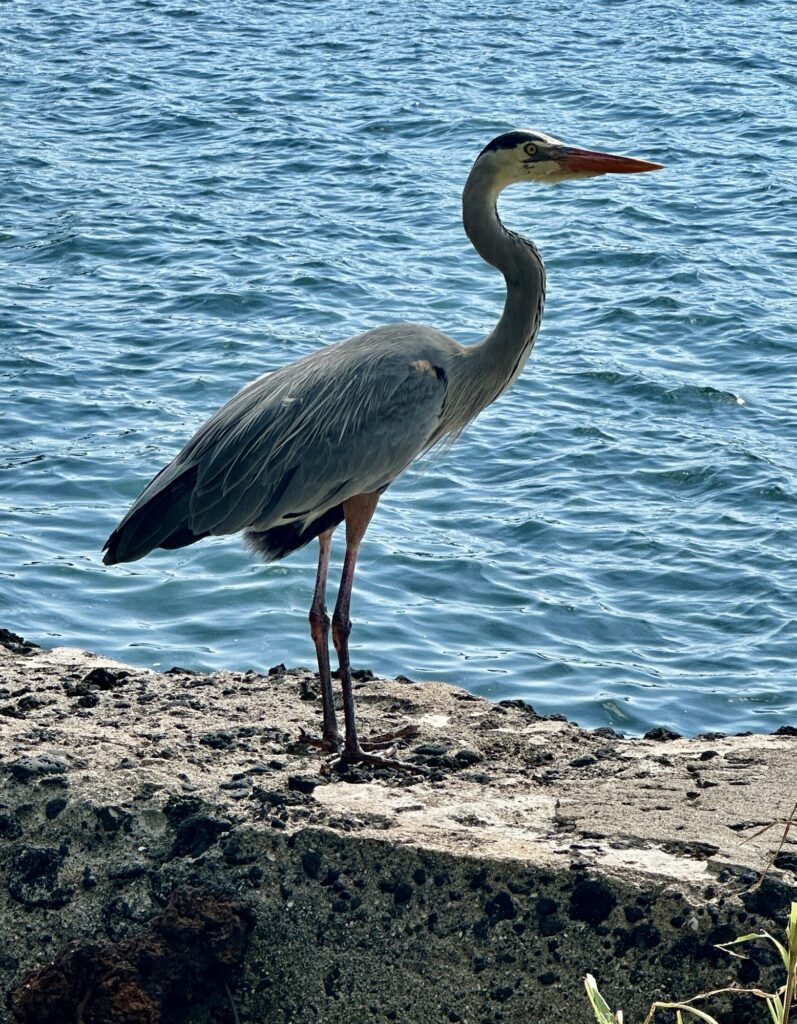
We spent a total of five nights at Floreana, and were taken by this tiny society, and how the island was organized. The island has a captivating history, and it was definitely interesting to learn about the origin of the settlers of Galapagos.
We are now heading off to the last of the four islands we are allowed to visit here in Galapagos, and that is Isla San Cristóbal, where the capital of Galapagos is. We plan to make an overnight sail there, as it is 60nm against the current, mostly.
